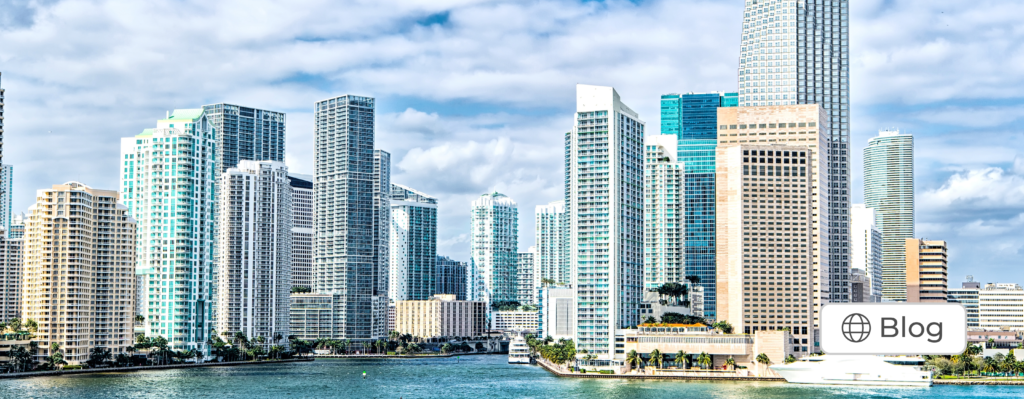Miami’s skyline is one of the most iconic in the United States, and its evolution over recent decades has been one of the main drivers of the city’s luxury real estate growth. What began as a modest horizon in the 1980s, dominated by a few financial skyscrapers, has undergone a massive transformation, becoming a symbol of prestige and economic development.
Today, Miami’s skyline is filled with towering residential and commercial buildings, largely driven by the demand for high-end properties from both international and local investors. They are attracted by the city’s climate, lifestyle, and its growing prominence as a global center for business and culture.
Evolution Over the Years
The growth of Miami’s skyline has not been an overnight phenomenon, but rather the result of decades of planning, investment, and development. In the 1980s, Miami began to gain international recognition as a tourist and financial destination. This attracted the first developers interested in constructing towers that offered ocean views and access to an innovative urban lifestyle.
As the city solidified its position as an international financial hub in the 1990s, the skyline began to grow more noticeably. During this period, the first luxury residential buildings emerged in areas like Brickell and Downtown Miami. This growth continued into the 2000s, with the arrival of ambitious projects such as the Four Seasons Hotel & Tower, which became one of the tallest buildings in the city in 2003.
The true boom occurred after the 2008 financial crisis, when the economic recovery brought a new wave of real estate projects focused on the luxury market. Over the past decade, Miami has seen an explosive increase in the construction of skyscrapers, many designed by world-renowned architects like Zaha Hadid, Renzo Piano, and Norman Foster.
The Skyline’s Impact on the Luxury Market
The impact of the skyline on Miami’s luxury real estate market is undeniable. The presence of iconic buildings in the city’s horizon has created an unparalleled allure for high-value property buyers. Areas like Brickell, Edgewater, and Miami Beach have witnessed a boom in the construction of luxury condominiums that offer panoramic views of the ocean and the bay, a feature that significantly boosts their market value.
Additionally, the skyline has played a crucial role in repositioning Miami as a top-tier cultural and artistic center. The proximity of these luxury towers to institutions like the Pérez Art Museum Miami and the Adrienne Arsht Center creates a balance between art, culture, and luxury, which in turn drives the continuous growth of the high-end real estate market in the city.
Future Prospects and Challenges
The future of Miami’s skyline continues to promise major developments. The city currently hosts some of the most ambitious projects in the country, such as the Waldorf Astoria Residences Miami, which, upon completion, will be the tallest building south of New York. This and other projects reflect the growing appetite for luxury housing in the city, a trend that has been further fueled by the COVID-19 pandemic, which has led many to seek properties in cities like Miami, where the climate and tax policies offer additional appeal.
However, this growth is not without challenges. Miami faces issues such as gentrification, which has displaced local communities in areas near the city center, as well as rising living costs. Furthermore, the city faces a critical issue: climate change. The rising sea levels and increased frequency of severe storms pose a direct threat to the city’s infrastructure, including its skyscrapers. This has led developers and local authorities to adopt mitigation measures, such as building more resilient structures and implementing advanced drainage systems.
Despite these challenges, the demand for luxury properties in Miami shows no signs of slowing down. The city continues to attract high-level investors who view luxury real estate as a solid and profitable long-term investment. With new projects on the horizon and growing international demand, Miami’s skyline will remain a key factor in the growth of the luxury real estate sector in the coming years.
Miami’s skyline has evolved impressively over the years, and its impact on the growth of luxury real estate is undeniable. As the city continues to develop, the combination of an iconic horizon, a top-tier cultural offering, and the ongoing demand for exclusive properties ensures that Miami will maintain its position as one of the most sought-after destinations for luxury real estate investment.
